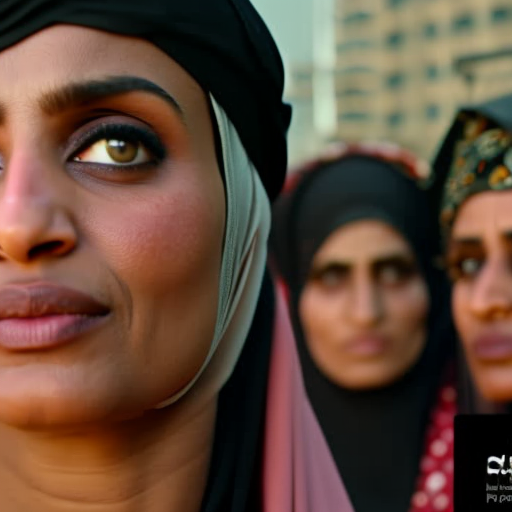Prevalence and drivers of female genital mutilation/cutting in three coastal governorates in Yemen – Yemen
Prevalence and drivers of female genital mutilation/cutting in three ... ReliefWeb


Attachments

BMC Public Health volume 23, Article number: 1363 (2023)
Abstract
Background
Female genital mutilation/cutting (FGM/C), a violation of human rights, remains common in the coastal areas of Yemen.
Objective
This study aimed to identify the prevalence of FGM/C and its risk factors among the youngest daughters in families in the Yemeni coastal areas, as well as the knowledge and attitudes of the local population towards FGM/C.
Methods
A cross-sectional survey was conducted among 646 women and 345 men from six districts in three Yemeni coastal governorates between July and September 2020 using a structured questionnaire. Categorical data were described by proportion. The chi-square test was used to identify factors associated with FGM/C. All factors with a p-value of ≤ 0.05 were included in the multivariate analysis. Adjusted odds ratios (AORs) and 95% confidence intervals (CIs) were calculated in the multivariate logistic regression analysis.
Results
The prevalence of FGM/C in Yemeni coastal areas was 89.0% (95% CI 84.0%-92.5%) among women and 79.8% (95% CI 73.5%-84.8%) among the youngest daughters in the surveyed families. Nearly two-thirds of women and half of the men recorded a poor knowledge level about the harms of FGM/C. Furthermore, almost two-thirds of both women and men would like to continue the practice of FGM/C. Among women, significant predictors of FGM/C among youngest daughters included advanced maternal age of ≥ 40 years (AOR 7.16, 95% CI 2.73–18.76), mother’s desire to continue FGM/C (AOR 8.07, 95% CI 3.64–17.89), and living in a rural area (AOR 3.95, 95% CI 1.51–10.30). Daughters of mothers who did not undergo FGM/C were more protected from FGM/C than those whose mothers had undergone FGM/C (AOR 0.04, 95% CI 0.02–0.09). Among men, the father’s desire to continue FGM/C (AOR 15.10, 95% CI 6.06–37.58) was significantly associated with FGM/C among the youngest daughters.
Conclusion
This study confirmed that FGM/C is still prevalent among communities in Yemeni coastal areas. Thus, community-based interventions with a focus on the rural population are vital to improving the awareness of various harms of FGM/C.
SDGs, Targets, and Indicators
-
SDG 5: Gender Equality
- Target 5.3: Eliminate all harmful practices, such as child, early, and forced marriage and female genital mutilation
- Indicator 5.3.1: Proportion of women aged 15-49 years who have undergone female genital mutilation/cutting
-
SDG 3: Good Health and Well-being
- Target 3.4: By 2030, reduce by one-third premature mortality from non-communicable diseases through prevention and treatment and promote mental health and well-being
- Indicator 3.4.1: Mortality rate attributed to cardiovascular disease, cancer, diabetes, or chronic respiratory disease
Analysis
1. Which SDGs are addressed or connected to the issues highlighted in the article?
The issues highlighted in the article are connected to SDG 5: Gender Equality and SDG 3: Good Health and Well-being.
2. What specific targets under those SDGs can be identified based on the article’s content?
The specific targets identified based on the article’s content are:
- Target 5.3: Eliminate all harmful practices, such as child, early, and forced marriage and female genital mutilation
- Target 3.4: By 2030, reduce by one-third premature mortality from non-communicable diseases through prevention and treatment and promote mental health and well-being
3. Are there any indicators mentioned or implied in the article that can be used to measure progress towards the identified targets?
Yes, there are indicators mentioned in the article that can be used to measure progress towards the identified targets:
- Indicator 5.3.1: Proportion of women aged 15-49 years who have undergone female genital mutilation/cutting
- Indicator 3.4.1: Mortality rate attributed to cardiovascular disease, cancer, diabetes, or chronic respiratory disease
Table: SDGs, Targets, and Indicators
| SDGs | Targets | Indicators |
|---|---|---|
| SDG 5: Gender Equality | Target 5.3: Eliminate all harmful practices, such as child, early, and forced marriage and female genital mutilation | Indicator 5.3.1: Proportion of women aged 15-49 years who have undergone female genital mutilation/cutting |
| SDG 3: Good Health and Well-being | Target 3.4: By 2030, reduce by one-third premature mortality from non-communicable diseases through prevention and treatment and promote mental health and well-being | Indicator 3.4.1: Mortality rate attributed to cardiovascular disease, cancer, diabetes, or chronic respiratory disease |
Behold! This splendid article springs forth from the wellspring of knowledge, shaped by a wondrous proprietary AI technology that delved into a vast ocean of data, illuminating the path towards the Sustainable Development Goals. Remember that all rights are reserved by SDG Investors LLC, empowering us to champion progress together.
Source: reliefweb.int

Join us, as fellow seekers of change, on a transformative journey at https://sdgtalks.ai/welcome, where you can become a member and actively contribute to shaping a brighter future.







